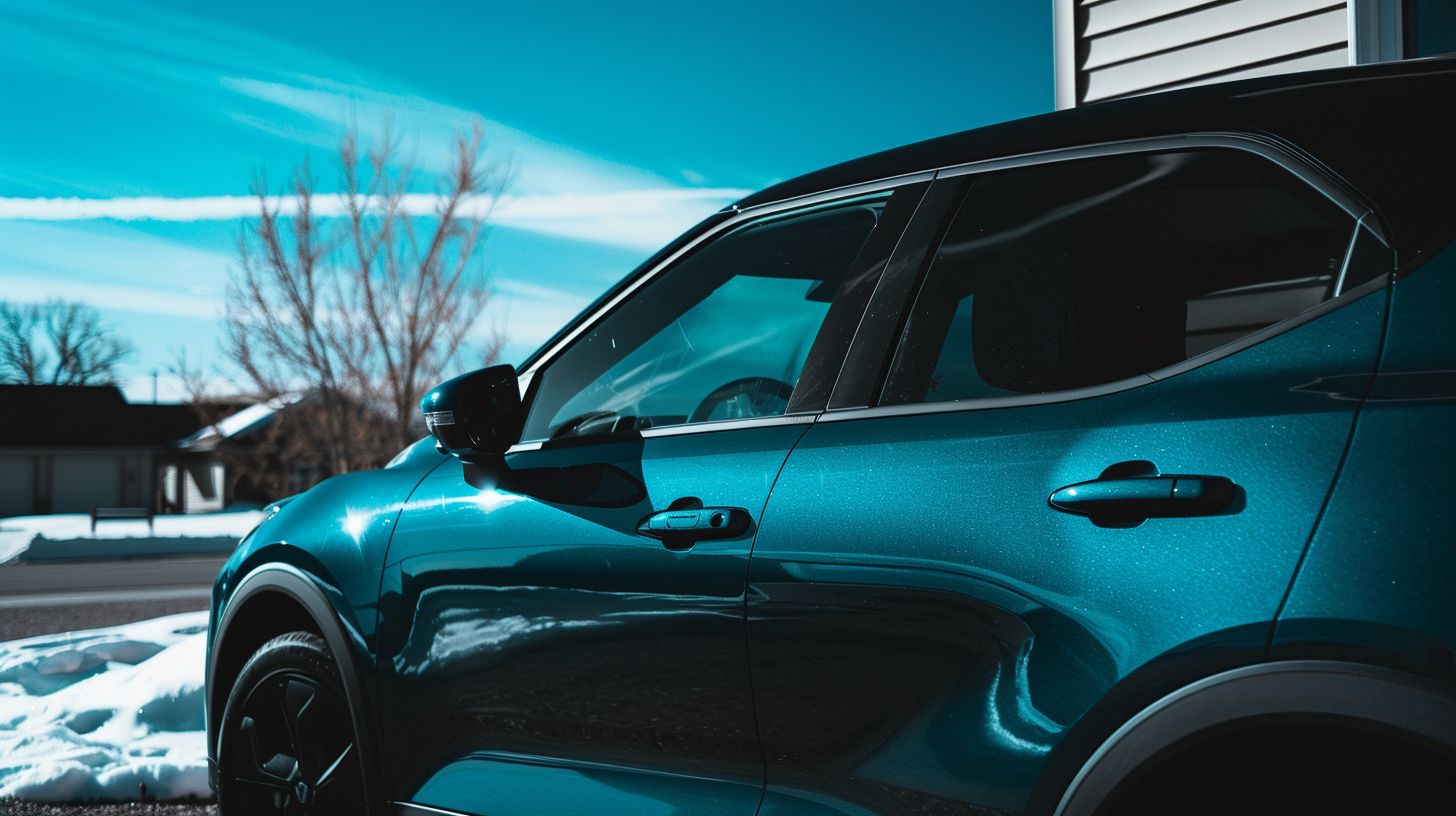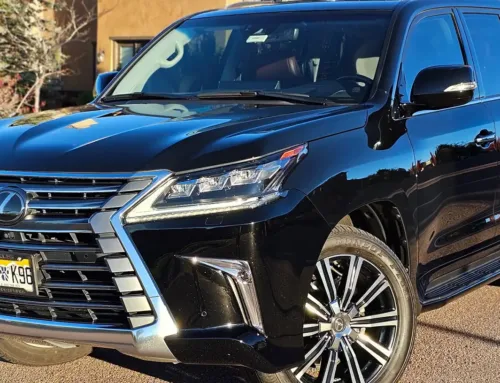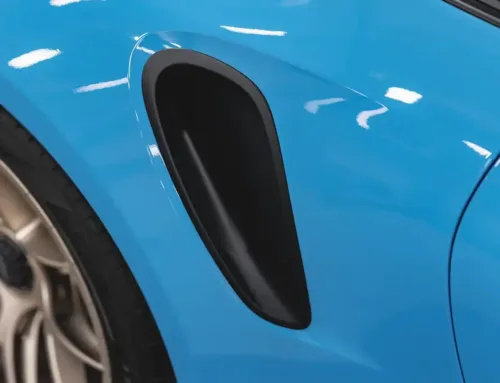Over the years I’ve seen countless car owners fall in love with the idea of dramatically dark window tint—only to end up with expensive tickets or forced removals. Here in Colorado Springs, understanding our state’s window tint laws isn’t just about avoiding fines; it’s about making an informed decision that protects both your investment and your safety.
Let’s cut right to the chase: The darkest legal tint in Colorado is 27% VLT (Visible Light Transmission) for all windows except the windshield, which allows only a 4-inch strip at 70% VLT. This article covers everything you need to know from my two decades of experience in the detailing industry.

Key Takeaways
- 27% VLT is the darkest legal tint for all side and rear windows in Colorado
- 70% VLT non-reflective tint allowed only on top 4 inches of windshield
- No medical exemptions available in Colorado for darker tint
- Red and amber tints are strictly prohibited
- Metallic or mirrored appearance tints are illegal
- Dual side mirrors required if rear window is tinted
- Fines range from $50-$5,000 for violations
- Professional installation ensures compliance and quality
Table of Contents
- Understanding VLT Percentages
- Legal Limits by Window
- Why Colorado’s Laws Matter
- Common Misconceptions
- The Cost of Illegal Tint
- Professional vs DIY Installation
- Benefits of Legal Window Tint
- Choosing the Right Tint
- Conclusion
- Frequently Asked Questions
- Additional Resources
Understanding VLT Percentages

VLT, or Visible Light Transmission, measures how much light passes through your window and tint film combined. Think of it this way: a 27% VLT means 27% of outside light makes it through to your interior. The lower the percentage, the darker the tint.
In my years of explaining this to customers, I’ve found it helps to use real-world comparisons. That 27% VLT Colorado allows? It’s about the same darkness as quality sunglasses—dark enough to reduce glare and heat, but light enough that you can still make eye contact with someone outside your vehicle. When customers ask about “limo tint” (typically 5% VLT), I remind them that 5 tint or 5% tint, commonly referred to as “limo tint,” only allows 5% of outside light through the window. This darkness level is illegal on all windows in Colorado. Moreover, it makes difficult to see OUTSIDE of your vehicle!
Here’s what different VLT percentages look like in practice:
- 70% VLT: Barely noticeable tint, similar to factory glass
- 50% VLT: Light smoke appearance, subtle privacy
- 35% VLT: Medium tint, noticeable but not dark
- 27% VLT: Colorado’s legal limit, provides good privacy
- 20% VLT: Noticeably dark, illegal in Colorado
- 5% VLT: “Limo tint,” extremely dark, illegal
Legal Limits by Window

Let me break down exactly what’s legal for each window on your vehicle. The percentage of light allowed through your film and glass in Colorado is very specific and different for sedan cars and SUV cars or vans, though the actual limits are the same for both.
Windshield: Non-reflective 70% VLT tint is allowed on the top 4 inches of the windshield. This strip helps reduce sun glare without impeding your view of the road. We’ve applied hundreds and hundreds of these strips, and when done correctly, they make a noticeable difference during sunrise and sunset drives through Colorado Springs.
Front Side Windows: Must allow more than 27% of light in. This applies to both driver and passenger front windows.
Rear Side Windows: Must allow more than 27% of light in. Colorado doesn’t give you more leeway on rear passenger windows like some states do.
Rear Window: Must allow more than 27% of light in. Additionally, Dual side mirrors are required if back window is tinted. This requirement ensures you maintain proper visibility even with tinted rear glass.
Important: The rules above are waived (allowing darker tint on the rear window for example) if the front windshield and front side windows meet 70% VLT or higher.
Further Reading: Colorado Window Tint Levels: Don’t Get Fined
Why Colorado’s Laws Matter
Having detailed vehicles from customers who’ve moved here from states like Texas or Arizona, I often hear surprise at our stricter laws. Colorado’s unique geography and climate play a role in these regulations. Our high altitude means more intense UV exposure, but it also means rapidly changing weather conditions where visibility becomes critical.
Our state also considers the safety of law enforcement officers. The tint color(s) of RED and AMBER are not legal by state law. These colors can obscure emergency vehicle lights or create confusion on the road. The law exists not just as a revenue generator but as a genuine safety measure for everyone on Colorado’s roads.
Common Misconceptions

Twenty years in this business has taught me that misinformation spreads faster than facts. Here are the biggest myths I encounter:
“SUVs and trucks can have darker tint.” False. The legal tint of darkness is measured by Visible Light Transmission (VLT), which indicates the percentage of light that passes through the film. Colorado applies the same 27% rule to all passenger vehicles, regardless of type.
“I can get a medical exemption for darker tint.” Unfortunately, Colorado law does NOT allow medical exemptions that would allow you use special tint.
“Factory tint doesn’t count toward the limit.” This is dangerously wrong. The 27% VLT includes your factory glass and any added film combined. Many luxury vehicles already come with light factory tint, limiting how dark you can go with aftermarket film.
“Metallic tint is fine if it meets VLT requirements.” Absolutely not true. No material shall be used on any window in the motor vehicle that presents a metallic or mirrored appearance. Even if the darkness is legal, reflective finishes are prohibited.
The Cost of Illegal Tint
People often ask me, “What’s the worst that could happen?” Let me paint you the real picture from what I’ve seen happen to customers over the years.
Penalties: Class B traffic infraction, or misdemeanor with $500-$5000 fine. But the financial hit goes beyond the ticket. You’ll need to pay for removal (typically $100-$200) and new legal tint installation ($200-$600 for quality work).
If the police stop your vehicle and discover that your windows violate Colorado’s window tinting law, you could face a ticket for as much as $500. Multiple violations can lead to license suspension, plus a possible increase in your insurance rate.
Professional vs DIY Installation

In my early years, I watched the rise of DIY tint kits with interest. Now, after fixing countless botched jobs, I can tell you exactly why professional installation matters—especially when legal compliance is critical.
Professional installers use specialized meters to measure VLT accurately. We account for factory tint, ensuring your final result stays legal. We also understand how different films interact with different glass types. That premium ceramic tint you want? It might measure differently than standard dyed film on your specific vehicle.
The craftsmanship difference shows too. Bubbles, peeling edges, and purple fading—these are hallmarks of amateur installation that I see regularly (and likely do too). When we install tint at Springs Detailing, we’re not just applying film; we’re protecting your investment with precision that comes from decades of experience.
Benefits of Legal Window Tint
After twenty years of transforming vehicles, I can confidently say that legal window tint remains one of the best (and least expensive) investments you can make in your vehicle. Here’s what proper 27% VLT tint delivers:
UV Protection: Quality films block up to 99% of harmful UV rays. Living at Colorado’s elevation, this protection is crucial. I’ve seen leather interiors that look brand new after ten years thanks to good tint, while untinted vehicles show cracking and fading in half that time.
Heat Reduction: Even legal tint significantly reduces interior temperature. On those scorching July days in Colorado Springs, the difference is remarkable. People often find their AC working less hard and fuel economy improving slightly.
Glare Reduction: That 27% VLT sweet spot cuts harsh sunlight without compromising visibility. Driving east on Highway 24 during sunrise becomes much more comfortable.
Privacy and Security: While not as dark as some prefer, legal tint still obscures valuable items from casual observation. It’s enough privacy for most people without crossing into illegal territory.
Choosing the Right Tint
Selecting window tint involves more than just staying legal. In my years serving Colorado Springs’ luxury car owners, I’ve learned that the right choice depends on your specific needs and vehicle.
Ceramic Tint: My top recommendation for Colorado, especially the XPEL brand due to its longevity. It offers superior heat rejection without metallic particles that could interfere with electronics. Perfect for those Tesla and BMW owners who need their tech working flawlessly.
Carbon Tint: Excellent middle ground. Provides good heat rejection with an attractive matte finish. Won’t fade to purple like cheap dyed films. Again, XPEL takes the cake here!
Consider your daily routine too. Commuting east-west? That windshield strip becomes essential. Frequently carrying passengers? They’ll appreciate the heat reduction from quality tint. Have kids? The UV protection gives peace of mind.
Further Reading: Ceramic Window Tint Vs Carbon: Which Is The Best Option?
Conclusion

Understanding Colorado’s window tint laws protects you from more than just tickets—it ensures you make an informed investment in your vehicle. That 27% VLT limit might seem restrictive, especially if you’re used to darker tint from other states, but it’s a reasonable balance between privacy, aesthetics, and safety. Furthermore, you don’t have to stress about being pulled over.
In my years serving Colorado Springs and surrounding areas, I’ve seen trends come and go, but quality and legal compliance never go out of style. Whether you drive a luxury sedan or a working truck, proper window tint enhances your ownership experience without legal hassles.
The key is working with experienced professionals who understand both the law and the craft. We’re not just applying film—we’re protecting your investment, enhancing your comfort, and ensuring you stay on the right side of Colorado law.
Frequently Asked Questions
Can I have 20% tint in Colorado?
No, 20% tint is illegal in Colorado for all windows except potentially when combined with factory glass that still allows the total VLT to exceed 27%. The law requires that more than 27% of light must pass through the window and tint film combined.
Are there medical exemptions for darker window tint in Colorado?
Colorado does not offer medical exemptions for window tint, regardless of the medical condition. The State of Colorado does not currently allow for window tint medical exemptions that would allow you to tint your windows darker for medical purposes. This is one of the strictest aspects of our state’s tint laws.
What happens if I buy a car with illegal tint already installed?
You’re responsible for ensuring your vehicle complies with Colorado law, regardless of who installed the tint. If you purchase a vehicle with illegal tint—whether from a dealer or private party—you’ll need to have it removed and replaced with legal tint. At Springs Detailing, we can measure the VLT and help you factor potential tint replacement into your buying decision.
How dark is factory tint on most vehicles?
Factory tint typically ranges from 15-26% VLT on rear windows of SUVs and vans, while sedan rear windows usually come at 15-20% VLT. Front windows rarely have factory tint. This is crucial because any aftermarket tint you add combines with factory tint. If your rear window has 20% factory tint, you cannot add any aftermarket film without going below the legal 27% limit.
Can window tint be too light to be effective?
Even light tint provides benefits. A quality 50% VLT ceramic film can block up to 99% of UV rays and significantly reduce heat, despite appearing nearly clear. In my experience, customers often focus too much on darkness and not enough on film quality. A premium light tint, such as from XPEL, outperforms cheap dark tint in every measure except privacy.
Additional Resources
- Colorado Revised Statutes – Window Tint Law (42-4-227) – Official state legislation governing window tint
- Skin Cancer Foundation – Window Film – Information on UV protection benefits



